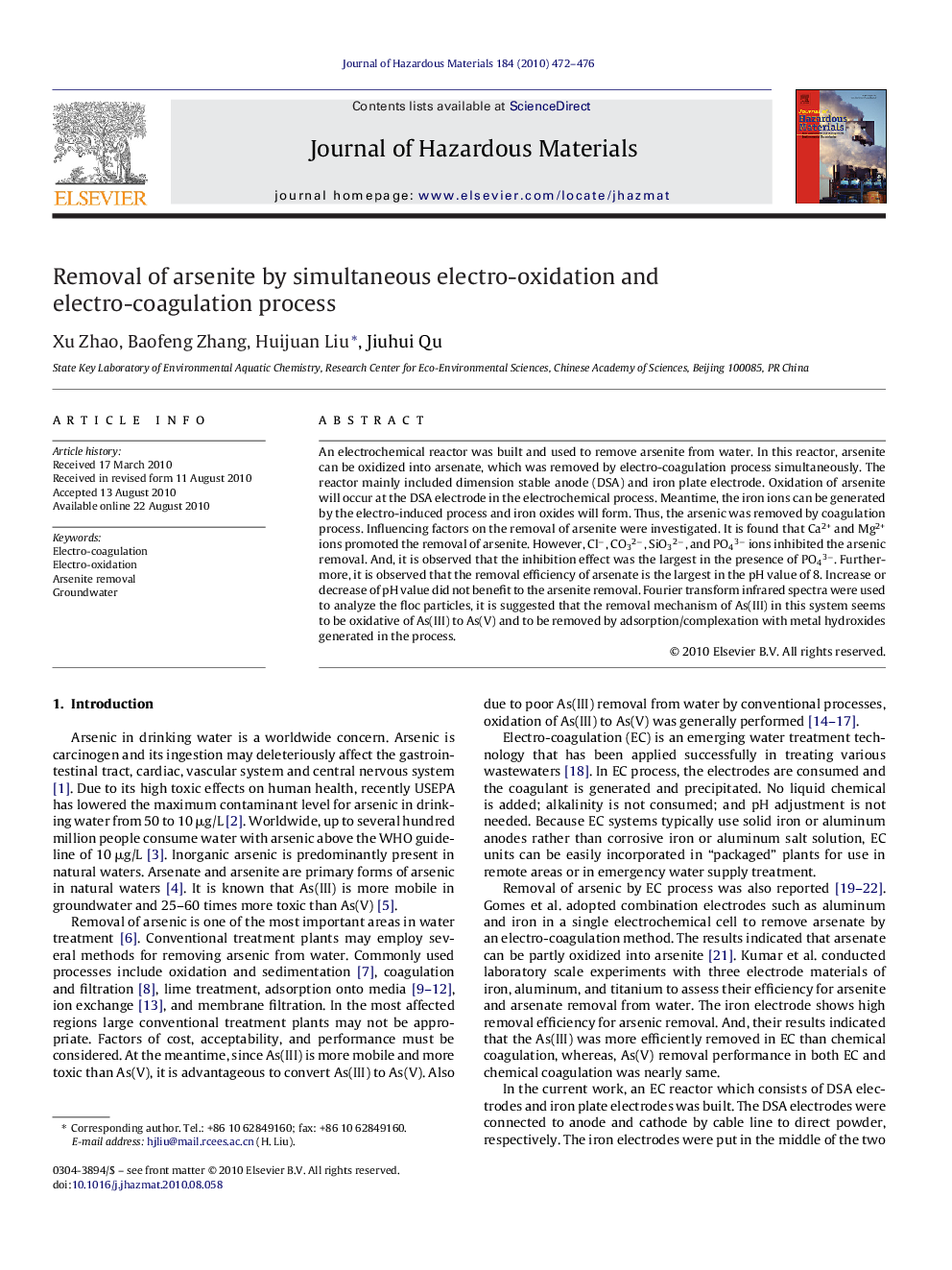| Article ID | Journal | Published Year | Pages | File Type |
|---|---|---|---|---|
| 580188 | Journal of Hazardous Materials | 2010 | 5 Pages |
Abstract
An electrochemical reactor was built and used to remove arsenite from water. In this reactor, arsenite can be oxidized into arsenate, which was removed by electro-coagulation process simultaneously. The reactor mainly included dimension stable anode (DSA) and iron plate electrode. Oxidation of arsenite will occur at the DSA electrode in the electrochemical process. Meantime, the iron ions can be generated by the electro-induced process and iron oxides will form. Thus, the arsenic was removed by coagulation process. Influencing factors on the removal of arsenite were investigated. It is found that Ca2+ and Mg2+ ions promoted the removal of arsenite. However, Clâ, CO32â, SiO32â, and PO43â ions inhibited the arsenic removal. And, it is observed that the inhibition effect was the largest in the presence of PO43â. Furthermore, it is observed that the removal efficiency of arsenate is the largest in the pH value of 8. Increase or decrease of pH value did not benefit to the arsenite removal. Fourier transform infrared spectra were used to analyze the floc particles, it is suggested that the removal mechanism of As(III) in this system seems to be oxidative of As(III) to As(V) and to be removed by adsorption/complexation with metal hydroxides generated in the process.
Related Topics
Physical Sciences and Engineering
Chemical Engineering
Chemical Health and Safety
Authors
Xu Zhao, Baofeng Zhang, Huijuan Liu, Jiuhui Qu,
